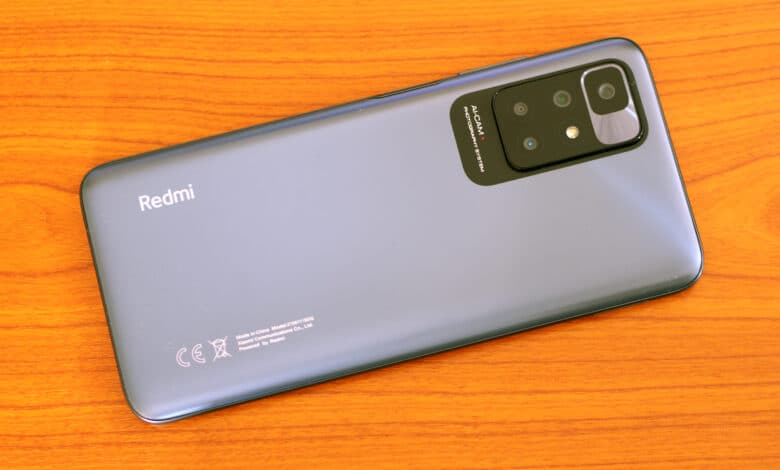
With the Redmi 10, Xiaomi has launched a new smartphone on the European market just in time for October, with which the company wants to serve the entry-level segment. The Redmi 10 relies on a 6.5-inch display and a Mediatek Helio G88, which is supported by four or six GB of RAM depending on the model. Beyond that, Xiaomi advertises features like a 90 Hz display, an “AI camera” with 50 MP, a fingerprint sensor and a 5,000 mAh battery. However, as usual in the price range, there are also features that are missing: For example, the latest mobile standard 5G or a wireless charging option.
How the Redmi 10 performs in practice, what the advertised features are good for, and whether we recommend the smartphone for its starting price of 180 Euros (64 GB, current: € 1.00 *) or 200 Euros (128 GB, current: € 218.32 *), we will clarify in the following review.
| Operating system: | Android 11 (MIUI 12.5) |
| Display: | 2400 x 1080 pixels, 6.5″, Gorilla Glass 3, 90 Hz |
| Unlock: | Face detection, fingerprint sensor |
| Rear camera: | Main camera: 50 MP f1.8 Wide angle: 8 MP f2.2 Macro: 2 MP f2.4 Depth of field: 2MP Videos: 1080p, 30 fps |
| Camera (front): | 8 MP, f2.0 Videos: 1080p, 30 fps |
| Interfaces: | USB-C 2.0, 3.5mm jack, WLAN 802.11a/b/g/n/ac, Bluetooth 5.1, NFC, infrared, FM radio |
| Mobile: | 2G GSM 850, 900, 1800, 1900 MHz. 3G: WCDMA 1, 2, 4, 5, 8 4G: LTE FDD: 1, 2, 3, 4, 5, 6, 7, 20, 28 4G: LTE TDD: 38, 40, 41 |
| Sensors: | Accelerometer, proximity sensor, gyroscope, light sensor, compass, fingerprint sensor |
| SoC: | Mediatek Helio G88, 12 nm |
| CPU: | 2x 2.00 GHz Cortex-A75 + 6x 1.80 GHz Cortex A55 |
| GPU: | Mali-G52 MC2 |
| RAM: | 4 GB |
| Memory: | 64 GB |
| Battery: | 5,000 mAh, 18 W fast-charge |
| Power adapter (included): | 3.0 A @ 5 V <> 2.23 A @ 9 V <> 2.25 A @ 10 V <> 1.67 A @ 12 V |
| Dimensions: | 162 x 75.5 x 8.9 mm |
| Weight: | 181 g |
| Inserts: | 2x nano SIM + 1x microSD |
| Variants: | 64 GB, 128 GB, Dark Gray, White, Blue |
| Price: | € 1.00 * / € 218.32 * |
Scope of delivery
The Xiaomi Redmi 10 is delivered in a typical smartphone cardboard box. In this, besides the smartphone itself, there is an opening key for the SIM tray, a USB power adapter, a USB-C charging cable with a length of 1.0m, the usual instructions and warranty information, and a transparent silicone case. The scope of delivery is thus comparable to that of other devices.
Design & Workmanship
When it comes to the design of the Redmi 10, Xiaomi follows the usual conventions: The smartphone’s screen covers almost the entire front of the device, broken only by a small, circular cutout for the front camera. The phone speakers, on the other hand, are located on the upper edge.
The usual functional and operating elements are located on the side of the Redmi 10, such as the main speakers, a jack, a volume rocker and the power button, which also serves as a fingerprint sensor on the smartphone. Thus, there is no need for one on the back: There is only the camera module that protrudes by about two millimeters and consists of four cameras and an LED light.
The Redmi 10 does not make any mistakes in terms of build quality: The smartphone is torsion-resistant, stable, and flawlessly manufactured. The individual casing parts are stable and have small, even gaps – there is nothing to complain about here.
The Redmi 10 also does well ergonomically: The plastic on the back feels pleasant, and the weight and thickness of the device match the display size. The Redmi 10 also feels good in the hand with the included case: The smooth silicone surface provides enough grip and does not enlarge the smartphone too much.
Software, performance & battery life
Xiaomi’s Redmi 10 currently relies on Android 11, which runs the MIUI 12.5 interface developed by Xiaomi. Compared with the normal Android, there are numerous design changes, such as in the task manager or the quick settings. MIUI also includes some system apps that Xiaomi probably wants to use to tie users more closely to its own products. For example, there is a dedicated browser and special apps for music, photos and videos. You do not have to use them, but they are considered system-relevant, just like the Google apps. Therefore, they cannot be uninstalled.
In addition, Amazon, Facebook, Tiktok and PUBG, for example, are preinstalled on the Redmi 10. Fortunately, you do not have to keep these apps on the system: They can be removed without any problems. After a corresponding cleaning action, the smartphone’s operating system then still occupies a good 23 GB of memory.
To run the software installed on the smartphone, Xiaomi relies on a Mediatek Helio G88, which houses two A75 and six A55 cores as well as a Mali-G52 and relies on TSMC’s 12 nm manufacturing. This combination enables a performance that is usual for the price range and thus a largely smooth operation: App launch times are short, switching between two programs is fast, and animations (almost) always run smoothly as well. Thus, the Redmi 10’s performance is sufficient for most users without problems, especially since the device does not get too warm at room temperature even during long-term load. However, the device might run out of breath in more demanding 3D games.
| Benchmark | Score |
| 3DMark Sling Shot | 1891 |
| 3DMark Sling Shot Extreme | 1410 |
| 3DMark Wild Life | 722 |
| 3DMark Wild Life Extreme | 182 |
| PCMark 10, Work 3.0 | 8209 |
| PCMark 10, Storage 2.0 | 11322 |
| PCMark 10, Seq Read | 308.37 MB/s |
| PCMark 10, Seq Write | 167.11 MB/s |
| PCMark 10, Random Read | 26.32 MB/s |
| PCMark 10, Random Write | 28.62 MB/s |
| Geekbench 5, SingleCore | 366 |
| Geekbench 5, MultiCore | 1335 |
| Geekbench 5, OpenCL | 1211 |
| Geekbench 5, Vulkan | 1268 |
In terms of battery life, the Redmi 10 achieves solid but not outstanding scores. At 90 hertz and maximum screen brightness, the smartphone manages just over seven hours in the PC Mark test (Work 3.0 Battery Life). At minimum screen brightness and 60 Hertz, it is a bit more than double that, and even at 50% brightness, it still manages well over twelve hours. The Redmi 10 should last for a normal day without any problems. However, a quick charge is only possible to a limited extent if the battery is empty: It took about two hours to go from 20% to 100% with the included power adapter.
| Scenario | runtime |
| 60 Hz, 0% brightness | 14:33 h |
| 60 Hz, 50% brightness | 12:32 h |
| 60 Hz, 100% brightness | 7:30 h |
| 90 Hz, 100% brightness | 7:04 h |
Display, camera & multimedia
In terms of multimedia capabilities, the Redmi 10 doesn’t allow itself too many weaknesses, while at the same time, the smartphone doesn’t make much of an impact. The 90 Hz display is the closest thing to mention here. It actually leads to smoother operation in a direct comparison than the optional 60 Hz playback. That is an advantage in our eyes.
The smartphone also does well in the other display properties: Color reproduction and viewing angle stability are good, the minimum brightness is dark enough for nighttime use, and the maximum brightness is usually sufficient for problem-free operation. Unfortunately, not much is visible on the Redmi 10 in direct sunlight, especially in summer. However, the competition is often not better here, so the smartphone is roughly on par.
The same applies to the device’s sound quality: The microphones are sufficient for simple communication, and the speakers are, as usual, not particularly detailed or voluminous. Nevertheless, the sound quality is adequate for the device class. If you want more, you should use a decent stereo system anyway, and the smartphone is well suited for that: There is nothing to complain about the audio quality via the jack.
However, we were not very impressed by the camera quality of Xiaomi’s newcomer: According to the product page, this is supposed to be one of the device’s outstanding features, but the four sensors cannot stand out from the crowd in our test. The camera app offers numerous modes and useful features, such as slow-motion or time-lapse recording, but the pictures suffer from the same problems as many other budget smartphones. For example, the colors do not really look coherent in some pictures, and noise quickly sets in with insufficient light. The night mode can counteract this a bit, but it is still better to stay in the (bright) light with the smartphone.
Thus, the front and rear cameras are sufficient for snapshots and social media pictures, but there are no bonus points. Xiaomi would have been better off with only one or two better image sensors on the back, which, however, deliver better results in our eyes.
Conclusion
Xiaomi wants to launch the Redmi 10 in the cheapest variant for 180 euros, so the device lands in a highly competitive market. The feature that makes the competition in the same price segment shrink the most is the built-in 90 hertz display.
Apart from that, the Redmi 10 remains average: The advertised 50 MP camera cannot stand out from the rest of the market, and other areas, such as the performance and battery life, are sufficient for normal use without problems, but not outstanding for the price range. In the end, the purchase decision for the Redmi 10 can thus be greatly reduced: Do you want a 90 hertz display or do you want to (continue to) use the MIUI interface? Then the smartphone is certainly worth a second look.
If you set your priorities differently, you might get a better combination for your money. Of course, it still has to be considered that the Redmi 10 has just been launched: If the smartphone slips a few tens below the RRP in some time, it would be much more attractive. [Current prices: € 1.00 * / € 218.32 *]
Xiaomi Redmi 10
Workmanship
Hardware
Multimedia
Performance
Battery
Value for money
79/100
A smartphone with solid implementation, but it can hardly stand out from the crowd.
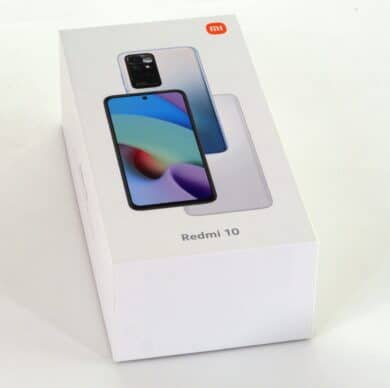



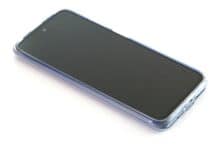














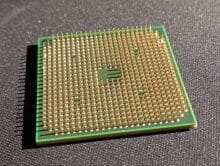




















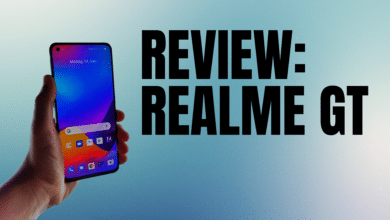

No replies yet
Neue Antworten laden...
Neues Mitglied
Beteilige dich an der Diskussion in der Basic Tutorials Community →